Whitepapers
Transportation
FILTER BY CATEGORY
- 3PL
- 4PL & LLP
- Automation
- Barcode & RFID
- Bulk
- Canada Logistics
- Chemical Logistics
- Cold Chain Logistics
- Customs Compliance & Duty Drawback
- Data Analytics
- Data Management
- Demand Planning & Forecasting
- Distribution Center Management
- Drayage
- E-Commerce
- Education
- Finance
- Fleet Management
- Food Logistics
- Freight Forwarding
- Freight Payment, Audit & Billing
- Fulfillment / eFulfillment
- Global Logistics
- Global Trade
- HazMat
- Intermodal
- Labor Management
- Last Mile / Final Mile
- Lift Trucks / Forklifts
- Logistics IT
- Materials Handling
- Moisture & Temperature Control
- Ocean
- Package Delivery
- Packaging
- Parcel
- Ports
- Printers & Labels
- Rail
- Real Estate
- Refrigerated Warehousing
- Retail
- Retail Logistics
- Reverse Logistics
- Risk Management
- Robotics
- Routing, Scheduling & Shipping Technology
- Security Solutions
- Site Selection
- Small Package Services
- Sourcing & Negotiations
- Supply Chain Execution
- Supply Chain Management & Optimization
- Supply Chain Mgmt/Optimization
- Sustainability
- TMS
- Transportation
- Transportation & Freight Management
- Trucking
- Trucking-LTL
- Trucking-TL
- Vendor Compliance
- Visibility
- Warehousing
- Wireless/Mobile Technology
- WMS
- Yard Management
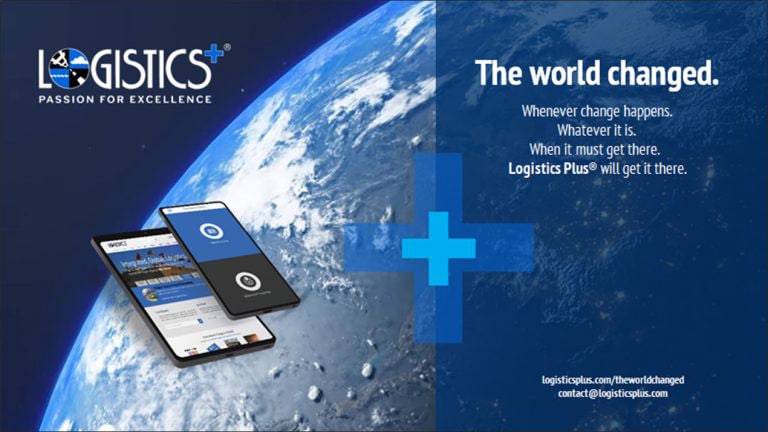
The World Changed
When change happens, Logistics Plus delivers with the experience, the locations, the capabilities and the people. Today’s challenges require A 21st Century Logistics Company™. See how Logistics Plus stands ready to meet the challenge by viewing their latest video.
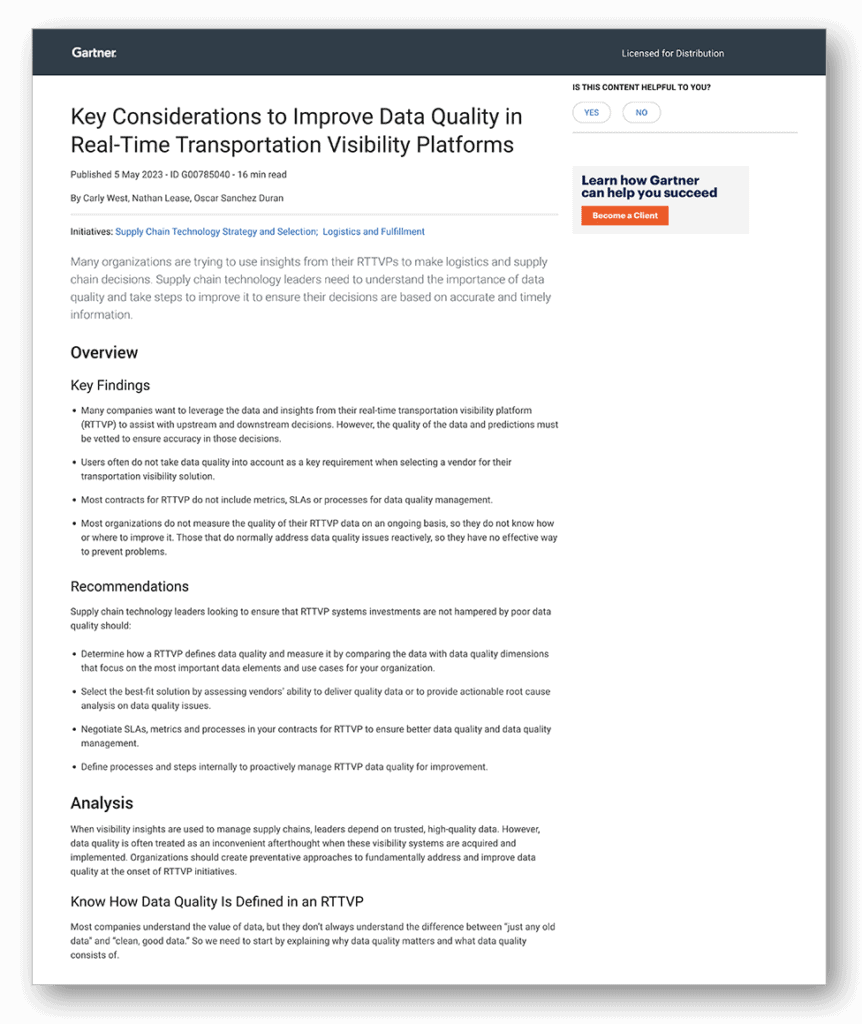
Key Considerations to Improve Data Quality in Real-Time Transportation Visibility Platforms
Can you act on your shipment visibility data? You can collect all the data you want—but if you don’t know HOW to look at it, you won’t know WHAT to do with it. Acting on insights collected from your Real-Time Transportation Visibility Platform (RTTVP) is a start, but if you’re not tracking every step of your shipments in real time—from point of origin to point of delivery—the data you’re acting on might be flawed. Supply chain technology leaders need to understand the importance of data quality, and take steps to improve it—to ensure that decisions are based on accurate and timely information.
This Gartner® research report, “Key Considerations to Improve Data Quality in RTTVP,” explains how organizations can learn to tell the difference between “any old data” and “good, clean data”—and much more.
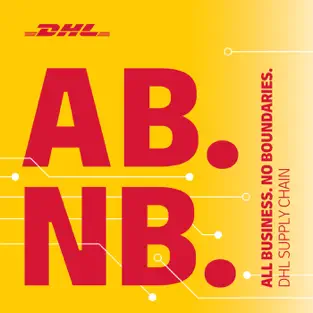
Supply Chain Integration with Scotts Miracle-Gro
In this episode of the DHL Supply Chain All Business. No Boundaries. podcast, we sit down with Tony Botos, Director of Logistics at The Scotts Miracle-Gro Company, and David DeMarais, Director of Operations at DHL Supply Chain. Listen in as they discuss how warehousing and transportation come together to create a holistic supply chain operation.
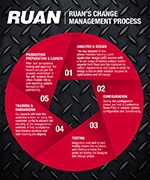
Effective Change Management Process Critical to a Successful Transportation Transition
Shippers can identify many benefits to relying on an experienced third-party logistics (3PL) provider to manage their transportation and logistics processes, including full network visibility, route optimization, carrier management, access to performance benchmarks and metrics, and more. Making the change, however, can be daunting, and shippers should ensure they choose an experienced partner—one who understands that having a detailed change management plan can mean the difference between a successful transition and a complete disaster. Ruan’s experts have identified three keys to effectively managing a transition to an outsourced transportation management solution.

Generate and Communicate Actionable Visibility Data for Shippers and Receivers
Today’s shippers and receivers are being challenged to navigate increasingly complex supply chains more efficiently. To succeed, they need the ability to view, analyze, predict and communicate the status of shipments in real time.As a result, supply chain visibility functionality has emerged as an industry requirement.
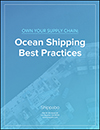
Optimize Your Supply Chain with Ocean Shipping Best Practices
Want to optimize your supply chain? Doing so can feel easier said than done. Shippabo’s eBook walks through ocean shipping best practices to help you get started. The eBook includes critical elements of a successful supply chain, eight tips for optimizing your supply chain, and answers to common shipping FAQs. Download it to optimize your supply chainís inventory turn and pre- planning capabilities.

The Do’s and Don’ts of a TMS Selection and Implementation
Transportation is often the largest supply chain cost for a company. A TMS can yield 6-8 percent savings on transportation costs, yet only a fraction of companies take advantage of a TMS. In this white paper, learn the do’s and don’ts of selecting and effectively implementing the right TMS for your company to realize transportation savings and improve your operations.
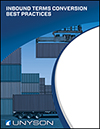
Inbound Terms Conversion Best Practices
Many companies remain unaware of just how much their inbound freight costs them because these charges are “buried” in the prices they pay for the goods. “Collect” payment terms allow companies to pay for their own inbound transportation costs rather than their vendors. This not only gives a company greater control over their network—often resulting in greater visibility, tracking, and monitoring—but is frequently more cost-effective as well. For details, download this free whitepaper.

Transportation – No Longer Just a Cost of Doing Business
Transportation leaders are constantly looking for ways to reduce costs while improving service levels as they conduct strategic assessments. Using the Spend Diagram to document freight flows and costs on a single page is the best way for a transportation team to collect data and focus their efforts. Read our white paper to learn how a Spend Diagram can identify savings opportunities throughout your transportation operations.

Find the Money: How a Transportation Spend Diagram Can Help
Leaders in transportation look for ways to reduce costs while improving service levels as they conduct strategic assessments or solution designs. In this white paper, learn how developing a simple, one-page transportation spend diagram at the beginning of your strategic assessment will identify savings opportunities throughout your transportation operations.
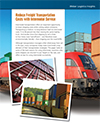
Reduce Freight Transportation Costs with Intermodal Service
Over-the-road trucking has had its challenges in recent years, thanks to driver shortages, HOS regulations, rising fuel costs, and capacity shortages. During that time, railroads have been improving tracks and facilities, as well as service offerings, to meet shippers’ needs. This paper addresses the misperceptions of intermodal service and provides tips to get the most out of intermodal service.

Managing Inbound Freight Fuels Greater Efficiencies
Need to reduce transportation costs? Inbound Transportation is an area rich with opportunity. In this whitepaper from enVista, you will learn how Transportation Management Systems have evolved to better address expanding inbound requirements and ways to reduce your transportation spend.
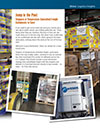
Pool Distribution: Shippers of Temperature-Controlled Freight Collaborate to Save
Shippers of temperature-controlled freight, particularly those that ship smaller orders, continue to rely on national less-than-truckload (LTL) carriers for deliveries across the United States. Instead, they should consider a pool distribution strategy that consolidates freight with like shippers, and delivers it in truckload volumes directly to key markets — no stops — for fi nal-mile service. This paper covers the benefi ts and keys to success in implementing such a strategy.

The Management Guide to Making a Routing Software Decision
Routing software technologies really do work. They lower costs and improve the service levels you offer your customers, while bringing practical and efficient planning solutions to your fleet operations. The keys to making a successful software decision include approaching it as a powerful business improvement benefit — not just a way to replace or reduce staff.

A Digital Company with Trucks: Why This Logistics Company Sees Itself as a Technology Company First
When Polaris Transportation Group, a Canadian-based logistics company, made a strategic shift to not just embrace technology but become industry leaders in it, the move was driven by the company’s unique position in the marketplace. Click to read the full whitepaper.

Fixing Failed Deliveries
With high e-commerce growth comes certain challenges, such as late or failed deliveries, which are often caused by inaccurate address information. Download this whitepaper to uncover the true impact failed deliveries are having on your business. Plus, discover top tips to optimize the customer experience and stamp out failed deliveries for good.

Fact or Fiction: Temperature-Controlled Shipping
A recent study says that supply chain mishaps cause 40% of food waste in North America. Much of this waste can be avoided by understanding the intricacies of temperature-controlled shipping. Learn about the many misconceptions to set the record straight—after all, an informed supply chain is a successful supply chain. Download this e-book to take control of your operations.

Finder Files: Mystery Materials
An unmarked cardboard box gets delivered to a business. It looks like nothing special until the box is opened and chemical containers are found. Now what? Logistics and environmental professionals submit this scenario to Lion Technology’s Finder Q&A more than you might think. Download this guide for tips to gather information that can help you properly reship or dispose of the package in compliance with regulations for hazardous materials and waste.

Toronto Area Trucking Company | Cargo Carrier Montreal
President Dave Cox and chief technology officer Dave Brajkovich talk about Polaris Transportation’s technology investments and how employees have embraced change. "Being comfortable with being uncomfortable" is the new norm as technology advances and continues to make a positive impact on the company’s employees and customer experience

Command Center–The Logistics Grandmaster
Are you struggling with an information overload and don’t know how to best use the wealth of data to derive insights? Read this whitepaper to learn how a command center in your logistics ERP can access multiple sources of real-time data (operational, historical, transient, ecosystem), collates and processes relevant data, and through a forecasting engine provides effective options after scanning all influencers (from weather, driver safety rating, and statutory regulations to route traffic, load, and stakeholder impact)! The Ramco Command Center keeps the suppliers, partners, and customers informed up to the minute with timely and accurate data about the vehicle and shipment as they move through each stage of the supply chain. Sounds too good to be true? Read on to see how you can make it happen!

Gartner ROI Toolkit for Real-Time Visibility Platforms
The new 2020 report from Gartner is clear. Real-Time Transportation Visibility Platforms (RTTVPs) are growing rapidly in popularity and driving real results. This guide is a valuable tool for supply chain leaders who are evaluating the benefits of visibility solutions and want to develop a business case for their company.

How a Transportation Spend & Revenue Diagram Can Help
Leaders in transportation look for ways to reduce costs while improving service levels as they conduct strategic assessments or design solutions. Using the Spend & Revenue Diagram to document freight flows and costs on a single page is the best way for a transportation team to collect data and focus their efforts; this will help to keep it simple, communicate the operation and costs to the executives, and prioritize efforts.

5 Signs You Need a New Training Provider
Training to handle, manage, and ship dangerous chemicals is not a rote exercise intended to “check a box.” When a mistake can lead to serious injury, death, evacuations, hospitalizations, highway closures, and lasting environmental contamination, training for personnel must meet higher standards for quality, accuracy, and knowledge retention. Download now.

5 Signs You Need a New Training Provider
Training to handle, manage, and ship dangerous chemicals is not a rote exercise intended to “check a box.” When a mistake can lead to serious injury, death, evacuations, hospitalizations, highway closures, and lasting environmental contamination-training for personnel must meet higher standards for quality, accuracy, and knowledge retention.

The Complete KPI Worksheet for Shippers
As a shipper, you know every mile, every load, every dollar counts. This is where KPIs or Key Performance Indicators come in. KPIs help you determine whether your carriers and transportation partners are delivering the most value for your buisness. The Complete KPI Worksheet for Shippers is the gold standard for carrier scorecards. Shippers can use this template to monitor performance, control costs, and benchmark their carrier network. Download now.

The ROI Behind Freight Visibility
Download Descartes’ eBook to learn how to measure the value and ROI of freight visibility, plus identify areas of greatest payback in your distribution operations to reduce tracking and detention costs, minimize chargebacks, streamline inbound deliveries and improve customer service.

HazMat Autocomplete Challenge: Part 2
In Part 2 of this Hazmat Autocomplete Series, hazmat trainer Flip De Rea gives unscripted answers to five more of the web’s most-asked questions about hazardous materials compliance.
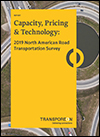
2019 North American Carrier Survey
What are carriers saying about the current capacity, pricing and technology situation in the North American logistics market? Carriers across the U.S., Canada and Mexico weigh in on the current economic events that are influencing pricing developments and having the highest impact on their businesses in 2019. Download the results of the most comprehensive survey among North American carriers to see just how much the landscape has shifted over the last year.

The Ultimate RFP Checklist for Shippers
Hey Shippers! Learn how to find the right freight partners, download The Ultimate RFP Checklist. It’s your ticket to managing bids, awarding lanes & reducing costs.

Beyond Transportation Savings: Leverage Freight and Parcel Audit Data to Unlock Business Insights
Most companies understand the importance of having reliable freight and parcel audit providers. What they may not understand, however, is how these services can improve strategies and results. Leveraging data provided by transportation insights is the key to unlocking valuable information and shining a light on weak spots in your supply chain. enVista’s latest whitepaper introduces the steps needed to make the most of your freight and parcel audit data, so you can reap the benefits of informed business decisions.
Carrier Snapshot Report
In September 2018 Convoy surveyed over 650 small and mid-sized trucking companies across the United States to collect a snapshot of the industry. Read the highlights to learn how you can optimize your supply chain to be a Shipper of Choice with carriers.
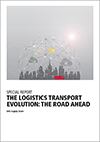
The Logistics Transport Evolution: The Road Ahead
Now more than ever, ground transportation is a strategic component of business success as seen by respondents to a worldwide survey conducted by DHL Supply Chain. Three quarters of companies surveyed indicated that investing in improving ground transportation will positively impact their sales, and they are willing to pay for and partner with 3PLs for value-added services that can show a measurable ROI.
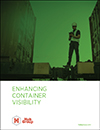
Enhancing Container Visibility
To increase savings, business leaders must concentrate on the total cost of the supply chain, rather than just transportation prices. The right company acts like a business partner and takes into consideration transportation, operations and inventory costs to help a network operate more efficiently. What is your transportation and logistics provider doing for you? What should they be doing?

An Inside Look at Drop Shipping
Retailers that expand their item assortment can dramatically increase customer satisfaction and sales. Vendor drop shipping enables retailers to easily add and test SKUs – without taking on additional inventory carrying costs. Read our white paper to find out how to develop an optimal vendor drop ship strategy and how to enable ship from vendor – in a matter of months!

5 Tips for Improving U.S./Canadian Border Clearance Efficiency
Download this new whitepaper to learn about:
Underestimating Border Clearance Processes. The border customs requirements and mandates have been streamlined and simplified in recent years so many businesses assume it can’t be that complicated…until they realize even a small mistake can lead to big delays.
The Most Common Mistakes. Misclassification of goods is among the top reasons for delays. Examples include: Miscalculating the shipment worth, misstating the shipment origin, and misclassifying the shipment tariff.

Navigating the New Trucking Landscape
Shippers are up against serious challenges in 2018. Numerous factors are combining to make it difficult for manufacturers and retailers to achieve the increased volume, speed and accuracy demanded by our booming economy. Put simply, constrained capacity has turned transportation into a pain point for many shippers. It’s a story we’ve heard before, but this time it’s worse than ever. The goal of this White Paper is to not only provide a deeper understanding of the causes of the situation, but also to outline ideas you can apply to your own logistics operation. With a fresh perspective and new information, you’ll be able to propose and implement solutions that can turn the situation around, and even contribute to supply chain efficiencies in areas beyond transportation alone.

Taking the Next Step and Gain Total Control of Your Supply Chain
TMS has been around for more than 20 years, but supply chain complexity and rapidly evolving technology is driving organizations to seek the next level of logistics and supply chain performance. A real-time, network-based control tower is a proven way to achieve new levels of efficiency and performance. But how do you get from where you are, to where you need to go? Find out where you are in your journey with the quick Control Tower Assessment.

The Business Case for Transportation Management
To meet continually changing consumer demands and expectations in an increasingly competitive market, shippers need a fast, efficient supply chain. Fortunately, as the supply chain has evolved, so too have transportation management systems (TMS) – now providing organizations with greater visibility and control over their supply chain than ever before. Download this new whitepaper to examine how transportation management solutions can help your company reduce risk, improve operational efficiency, and drive meaningful change within your organization.
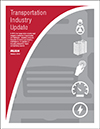
Transportation Industry Update
In 2018, the transportation industry must navigate a confluence of opportunities and challenges—regulatory pressures, innovative disruptions and changing marketplaces—to capitalize on increasing demand for freight and tightening capacity. Download this whitepaper for a detailed look at these challenges and suggestions for overcoming them.
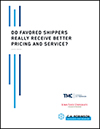
Do "Favored Shippers" Really Receive Better Pricing and Service?
Anecdotal evidence and some qualitative research suggests that "favored shippers"—companies for which carriers prefer to haul freight—obtain better pricing and service. But do they? In this paper, Iowa State University researchers explain h, ow they sought to understand the voice of U.S. truckload carriers, how they quantitatively measured the effects of "favored shipper" characteristics on transportation costs, and what characteristics actually make shippers favored in the transportation marketplace.

Find the Money: How a Transportation Spend Diagram Can Help
Transportation leaders are constantly looking for ways to reduce costs while improving service levels as they conduct strategic assessments. Using the Spend Diagram to document freight flows and costs on a single page is the best way for a transportation team to collect data and focus their efforts. Read enVista’s whitepaper to learn how a Spend Diagram can identify savings opportunities throughout your transportation operations.

Winning the Battle for eCommerce Last-Mile Excellence
Amazon is driving consumer delivery expectations. Their delivery services are not just the gold standard, they re THE standard by which other retailers are judged. Amazon is the reason people now think 2-day-and-under delivery times are no longer expedited service; they re expected service. So what ‘s a retailer not named Amazon to do? Make your last mile your best mile. Last-mile service is truly the make-or-break part of a transaction. When a customer is either pleased with delivery services or disappointed if something goes wrong, the appreciation (or the blame) goes not to the logistics provider but to the retailer. There are a host of options and strategies to improve last-mile service, but to make your last-mile service a true competitive advantage, you ll need two things: technology and the right logistics provider. Find out more by downloading this free whitepaper.

Examination of On-Time Delivery Service in a JIT Environment
Adopting just-in-time (JIT) inventory principles has enhanced production operational efficiency, cost effectiveness and customer responsiveness for many organizations. But the real key to success is providing a solution that applies JIT principles to the specifics of each client’s industry and accurately tracks and delivers on-time performance, regardless of industry conditions, leading to the greatest competitive advantage.

Think Like a Big Shipper
Many small and mid-sized shippers suffer from the mindset of, “I’m not Walmart.” This approach assumes that size and sophistication are necessary to achieve meaningful transportation costs savings. However, shippers of all sizes can always develop and implement strategies that have a return on investment. You don’t have to be a big shipper to obtain similar savings – simply think and act like one. Read this whitepaper to learn more.
The Evolving Freight Forwarding Market (2017)
Digitization is the future for freight forwarders, according to the results of a survey conducted in April 2017 and based on 80 responses. This whitepaper details those results, including how the freight forwarding market is being redefined, critical pain points, what customers value most from their forwarders, market share changes, and more. Technology is leading the way for supply chains and forwarders have taken note: according to the survey, digitization is not a "nice to have" but a "need to have" for all supply chains.

Game Changer – Transportation Spend Intelligence
Best-in-class analytics can transform transportation cost data into an advantage for any company. Analytics can eliminate the pain involved with managing raw transportation data and converting it into actionable intelligence – reducing the time required to produce analyses or take action. But with such promise comes hype, making it difficult to distinguish between solutions. In this whitepaper, you’ll learn what a best-in-class transportation spend analytics solution should deliver.
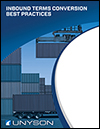
Inbound Terms Conversion Best Practices
Many companies remain unaware of just how much their inbound freight costs them because these charges are “buried” in the prices they pay for the goods. “Collect” payment terms allow companies to pay for their own inbound transportation costs rather than their vendors . This not only gives a company greater control over their network—often resulting in greater visibility, tracking, and monitoring—but is frequently more cost-effective as well.

Oil and Gas Transportation Mistakes and How to Correct Them
Historically, O&G companies’ soaring profits masked the poor state of logistics operations within their supply chains. Now that profits are thin, they’re rushing to save money wherever they can. O&G companies realize the savings potential in their disordered logistics processes, specifically in transportation management. Many businesses are making the same mistakes over and over, despite the fact that they can be easily avoided.

Examination of an Inbound Web Portal
Regardless of the size of a business, everyone is looking to save money and streamline processes. However, often companies overlook the cost of their supply chain, particularly their inbound transportation. Inbound web portals have the ability to bring several companies together in one place to share accurate and necessary information and provide an opportunity for business-to-business growth. Overall, each component of the supply chain—whether it is customers, 3PL providers, carriers or vendors—can reap the rewards of reduced costs, advanced visibility, improved reliability and increased savings.
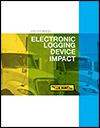
Electronic Logging Device Impact
The Federal Motor Carrier Safety Administration (FMCSA) passed a regulation in December 2015 that requires all commercial trucks and buses manufactured after 2000 to be equipped with an electronic logging device (ELD). An estimated three million drivers who currently use paper logs will have to convert to a digital log. This may affect HOS compliance and carrier capacity. This executive briefing offers more information about this mandate and how it affects the industry.

Considerations for Complying With the ELD Mandate
Learn how to get the most return on investment from your fleet while also abiding by the Federal Motor Carrier Safety Administration’s new mandate requiring the use of Electronic Logging Devices (ELDs) to log drivers’ record of duty status. This whitepaper explores what the mandate entails, and the features and functions of ELDs. It also includes advice on how to successfully implement these devices into your existing systems.

Transportation Trends and Insights
Each month, Penske publishes Transportation Insights–articles designed to inform and enlighten those in the transportation industry. Our downloadable e-book is a collection of some of our best recent Insights, centered on the topics of talent shortage, driver health and well-being, and safety and compliance. Each piece features information from industry insiders or thought leaders, and offers relevant information on some of the key areas that impact your business the most.

The Case for Lowering LTL Limits of Liability
This publication illustrates why it is in the best interest of third-party logistics providers to work with carriers and reduce limits of liability to $1 per pound in the LTL arena. It also describes the key points that cast 3PLs in a favorable light to ultimately forge stronger, more strategic partnerships with LTL carriers. Delivering an analysis of effective procedures for partnership, this whitepaper outlines specific strategies 3PLs can use to better serve carriers by identifying and working to solve the issues that complicate the existing liability landscape.
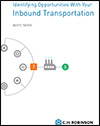
Identifying Opportunities With Your Inbound Transportation
An efficient inbound transportation program can reduce costs, improve service, minimize delays, reduce confusion, and raise performance. Get the whitepaper today and learn where you can find savings and eliminate gaps in your inbound program.
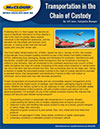
Transportation in the Chain of Custody
Pest infestations while processed foods and raw commmodies are transported are more likely to increase during summer months, which can directly impact food quality and consumer health. Proper transportation of food items is often overlooked, and transportation directly impacts issues such as spoilage, pest infestation, packing integrity, and food quality. Download this free whitepaper to learn proper prevention methods, create a plan to predict pending problems, act swiftly when an issue does arise, have efficient routing systems in place, manage inventories to eliminate surplus, and prevent historical challenges.

660 Minutes: How Improving Driver Efficiency Increases Capacity
Recent industry research has found that since the July 2014 changes to Hours-of-Service, drivers spend an average of only 390 minutes (6.5 hours) of the 660 minutes of available driving time behind the wheel. There are many pressures acting upon capacity, and many upcoming regulations, which could inhibit driver hours. This whitepaper helps shippers and carriers attain a strong understanding of Hours-of-Service, and helps them pursue best practices for improved driver utilization.

Crossing Over: TMS Delivering Big Value for Small Shippers
No matter the size of your shipping operation, the logistics are complicated. Optimizing loads, reducing dock dwell, load tendering, meeting deadlines, and many other issues combine to challenge your business every day. Transportation Management Systems (TMS) have long been a mainstay in large shipping departments, while smaller shippers have been left using manual systems such as spreadsheets, or worse. Not anymore. A SaaS cloud-based TMS will show you the money – with little to no investment up front, and big value to your bottom line. Find out more by downloading this free whitepaper.

How to Get More Done for Less With a GPS Fleet Tracking System
Controlling labor costs doesn’t have to lead to diminished service quality. In fact, with a vehicle tracking solution like Networkfleet®, you can control labor costs and improve service quality at the same time by managing your entire fleet more efficiently and effectively. Combining the data from Networkfleet with a disciplined approach that rewards drivers for efficient driving habits can enable your fleet to drive fewer miles, reduce overtime and other labor expenses, and get more jobs done in less time. To learn more about a vehicle tracking solution can help bring your labor costs under control, download this free whitepaper today.

Industry Challenges
The transportation industry faces many challenges in 2015 and beyond. Increased recruiting expenses and mileage pay, truck and maintenance costs, preparation for future regulations on equipment, lost productivity due to new regulations, and a precarious market capacity situation are all stressing forces. This whitepaper provides valuable information and insights surrounding the driver shortage, driver retention, tightening regulations and capacity, railroad investment, equipment costs, and overall productivity.
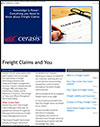
The Complete Guide for Shippers to Process & Master Freight Claims
Understanding freight claims is vital to running an efficient transportation and logistics department. Unrecovered freight claims have a direct impact on the bottom line of a company—and the tougher the economic times and thinner the margins the greater the impact. Download this whitepaper to learn the difference between freight claims and freight liability, tips to mitigate freight damage, steps toward successful freight claims and more.

Dimensional Weight Pricing–A Winning Strategy for Change Charges
Beginning in 2015, UPS and FedEx are changing their rate structures to use dimensional-weight pricing, a common industry standard, for invoicing all domestically shipped parcels. Before these changes occur, it is important to prepare to avoid future headaches. This new whitepaper explains how the transportation and logistics sector will be impacted, defines dimensional-weight pricing, and offers tips to prepare for the changes. It also explains how an investment in dimensioning technology can pay for itself, and makes transportation and logistics processes easier and more profitable.
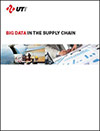
Big Data in the Supply Chain
Prior to investing resources into "big data" systems, software, and people, firms must understand that data aggregation alone is insufficient. Without a well-thought-out strategy, big data projects can result in confusion between teams, or worse, lead to sunk costs. This article uses three examples to illustrate data-driven improvement opportunities in transportation, warehousing, and network design. The ultimate deliverable of data-oriented efforts should be greater transparency in decision-making.
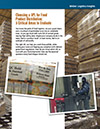
Choosing a 3PL for Food Product Distribution: 5 Critical Areas to Evaluate
You know the perils of food logistics. Let your guard down, and a truckload of perishables turns into an unsellable mess. Or you get stuck with racks full of canned goods nearing their sell-by date. The right third-party logistics provider can help you avoid those pitfalls, while cutting costs and keeping you compliant with relevant government regulations. How do you know which 3PL to trust with your food shipments? Download this free whitepaper to discover the five essential questions every food shipper should ask.

Out with the Old—In with the New! Managing Inbound Freight Fuels Greater Efficiencies
Need to reduce transportation costs? Inbound transportation is an area rich with opportunity. In this whitepaper from enVista, you will learn how Transportation Management Systems have evolved to better address expanding inbound requirements, and ways to reduce your transportation spend.
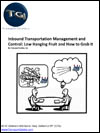
Inbound Transportation Management and Control: Low Hanging Fruit and How to Grab It
When it comes to managing your transportation program, the overriding theme must be control, yet many organizations have not applied the same efforts to inbound transportation management as they have to outbound management, making it a great opportunity for efficiency and cost savings. This whitepaper will identify and discuss the most important, perhaps simplest of steps necessary, to improve Inbound Transportation Management, as well as the opportunities that this improvement will yield.
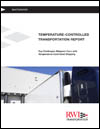
2012 Temperature-Controlled Transportation Report
This study, based on a survey of North American shippers, examines the top challenges faced in temperature-controlled transportation. It provides interesting insights and information about best practices, common challenges, and emerging trends in today’s temperature-controlled market. The report is provided by RWI Transportation, an asset-based logistics company offering temperature-controlled transportation. RWI manages in excess of 100,000 shipments annually, including both temperature-controlled and dry freight.
